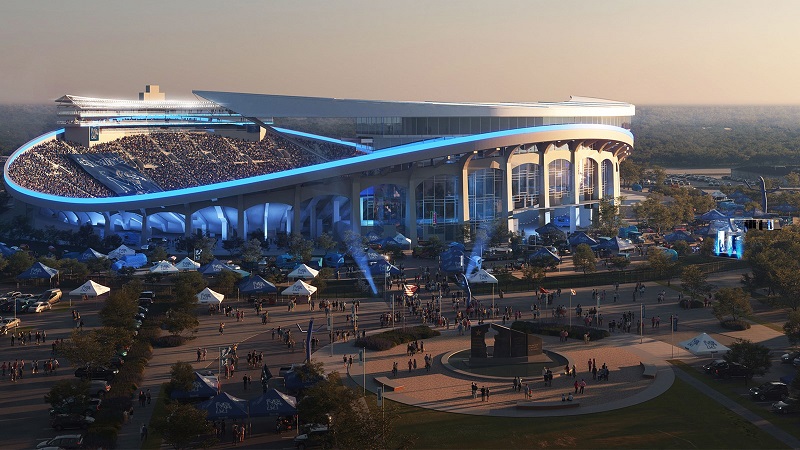
The University of Memphis and the City of Memphis have announced plans for a $150-$200m renovation of the Simmons Bank Liberty Stadium, in the US.
The project would revitalise and upgrade the home of Memphis Tiger Football.
The university had two options, one of which was to revamp the current stadium, and a second option was to construct a new stadium on campus by engaging global architecture design firm Populous.
After analysing with government leaders, the university decided to renovate the Liberty Stadium.
Memphis vice-president and intercollegiate athletics director Laird Veatch said: “We started this process with a specific set of transformational goals in mind, and this renovation hits all of them.
“It will demonstrate our commitment to sustainable competitive and recruiting success, provide a tremendous upgraded fan experience, and secure positive long-term economic impacts for our university and city, all while taking advantage of the current stadium infrastructure and the investments already underway at Liberty Park.”

US Tariffs are shifting - will you react or anticipate?
Don’t let policy changes catch you off guard. Stay proactive with real-time data and expert analysis.
By GlobalDataThe project plan includes the transformation of the west side of the stadium, offering various seating options.
A hospitality experience will also be created within the halo space encircling the stadium.
Other seating options, like family boxes on the north end, and party deck patios for students on the south end, will also be included.
The plan also includes the probable reuse and retrofit of the east side suite tower.
The stadium renovation is expected be completed before the 2025 football season.
Liberty Park will feature a youth sports facility, dining and retail spaces, offices, hotels, and apartments.
University of Memphis president Dr Bill Hardgrave said: “The commitment to greatly enhance the home of Tiger Football is a significant step toward realising our potential as we position ourselves to succeed at the highest level of collegiate athletics.”



